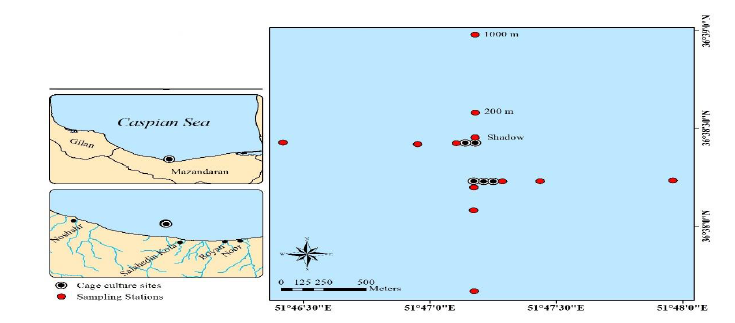The study of interaction between fish cage culture and sediment population dynamics of heterotrophic bacteria in the southern of Caspian Sea (Nowshahr region)
DOI:
https://doi.org/10.17762/sfs.v7i3.88Keywords:
Bacterial contamination, Fish cage culture, Sediment, Caspian Sea, Nowshahr, IranAbstract
The aim of this study was to investigate the interaction between fish cage culture and sediment bacterial contamination in the area southern of Caspian Sea. For this purpose, sampling of sediment was collected in Mazandaran province (Nowshahr region) during the rainbow trout farming period at different distances (shadow, 200 and 1000 m from the cage) in 2017-2018. The results showed that in the whole rearing period, the maximum and minimum mean of total count sediment bacteria (TCB) (246875 CFU/g) and (2500 CFU/g) were observed in the middle and the end of the rearing period at the 200 m distance, respectively. The presence of total coliform and fecal coliform was recorded 12.5% and 2.08%, respectively, and Clostridium perfringens was not observed in any of the samples and stations. Maximum and minimum of pH, Eh and TOM were observed 8.60 and 8.05, -51.3 and -83.4, and 14.18 and 2.45, respectively. The mean of TCB, pH, Eh and TOM% were significantly different between rearing periods (p<0.05).
It seems that fish cage culture activity in the southern region of the Caspian Sea, due to low breeding capacity, short breeding period, permanent currents, cages place with a suitable distance from the shore, had a relatively small effect on some sediment quality factors and had no significant effect on bacterial communities of sediments around the cage.










